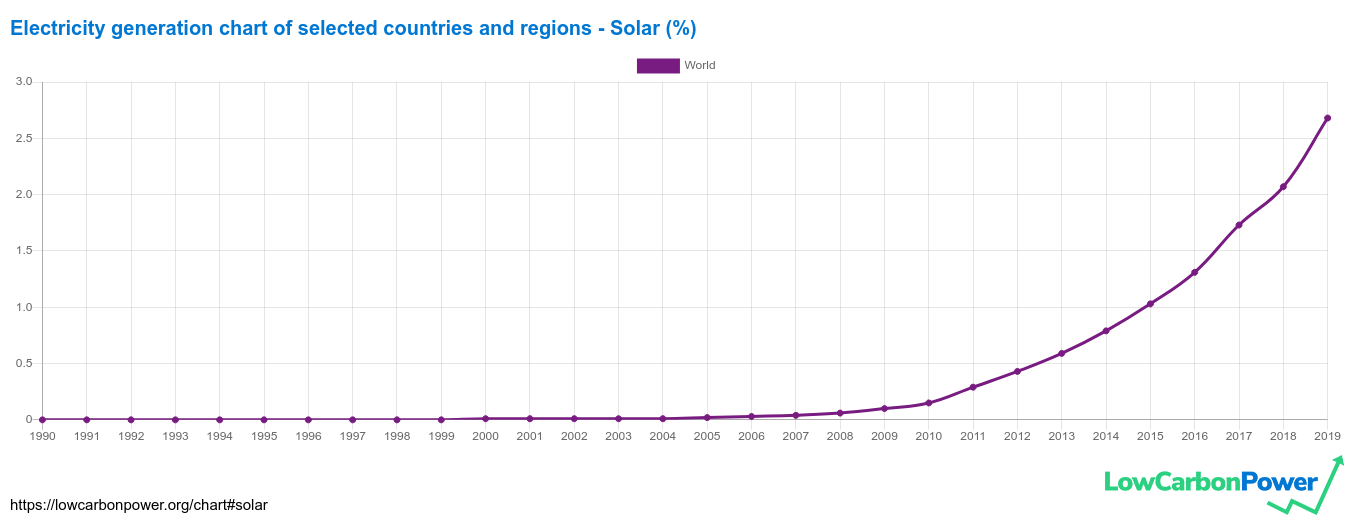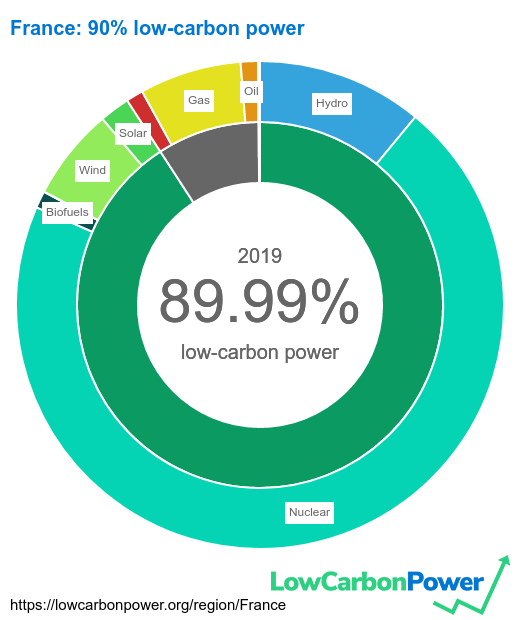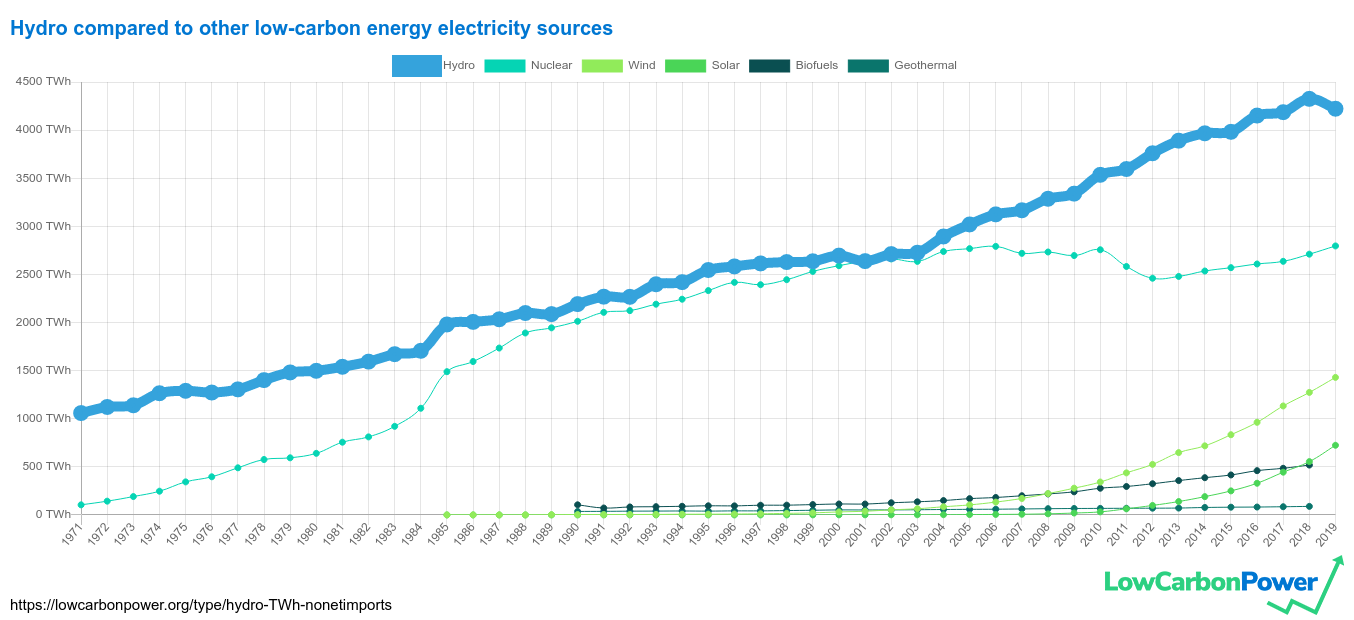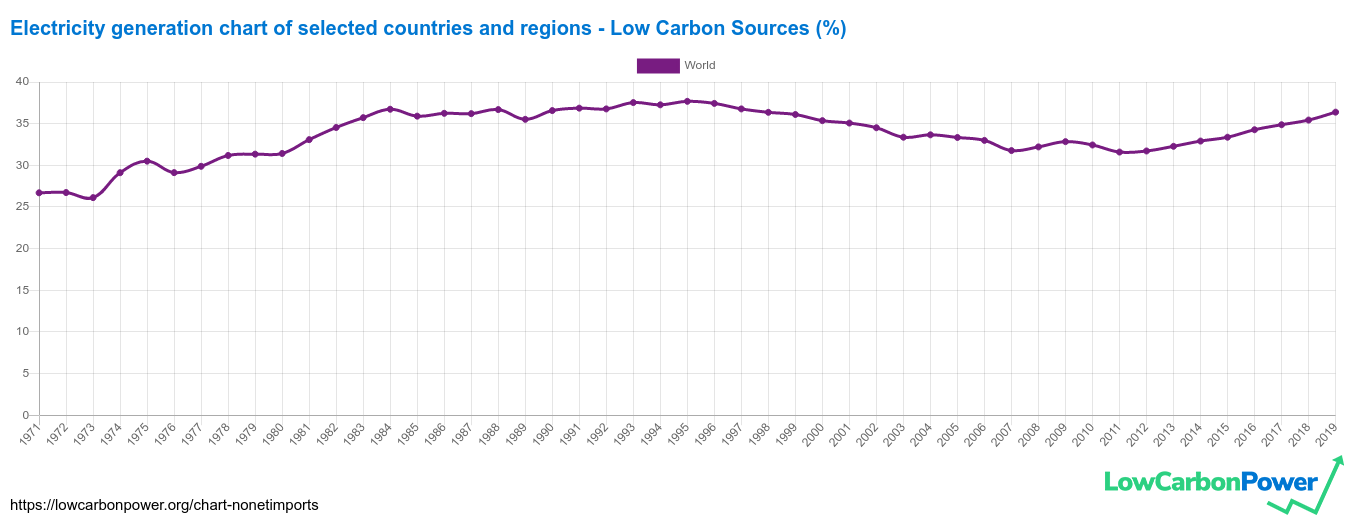Why are we not talking about hydropower?
Why are we not talking about hydropower?
One of the major rifts in the environmental movement concerns what technology we should prioritize to speed up decarbonization efforts. One side advocates renewables - usually exemplified by solar and wind power. The other side believes the solution is nuclear energy. The pro-renewables camp often points to the strong growth of solar and wind in recent years, accompanied by decreasing cost. They also emphasize the perceived risks of nuclear power. The pro-nuclear people point out that solar and wind power is intermittent, forcing continued reliance on fossil fuels - coal or gas - when the sun doesn't shine, while nuclear power delivers base load power all the time. As to the risks of nuclear, they argue that these have been exaggerated in popular perceptions while data shows nuclear to be one of the safest sources of electricity.
And so the debate rages on. For those of you who think it's a new dispute, you may be interested to know that the first commercial solar panel was created in 1881 and the first nuclear power plant that delivered electricity joined the grid in 1951.
The case for solar energy is its exponential growth:

The case for nuclear is that it can generate most of the electricity of a major economy, such as France, which gets 70% of its electricity from nuclear power. The most significant contribution of solar energy in relative terms is in Yemen, which gets 13% of its electricity from solar.

The choice between wind and solar, on the one hand, and nuclear, on the other, is surprising for someone like me who tries to study electricity generation without technological bias. This is because neither wind, solar or nuclear are the most significant low-carbon power source currently available. As you can guess from the title of this post, the biggest low-carbon electricity source is actually hydropower. It’s also not just more significant than any other single low-carbon energy source, it’s more important than nuclear and solar combined. In addition, for the last 50 years, it’s been the most significant low-carbon power source every single year. Our data doesn’t stretch further back than 1971 but I assume that it has in fact always been the most significant low-carbon electricity source, since nuclear generation was a minor contributor in its first two decades of existence, and solar and wind didn’t start to contribute at all to the grid until the 1980’s.

In addition, of the 26 countries that get 70% or more of their electricity from low carbon sources, all but three gets most of it from hydropower (see our ranking). Two more still get 30% or more from hydro, but slightly more than that from nuclear (in the case of Sweden) and geothermal energy (in the case of Kenya). The only country on the list which does not use significant amounts of hydropower is France, which gets 70% of its electricity from nuclear.
Of course, this could change. If solar and wind keep growing at significant rates, they could surpass hydropower in the decades to come. If there’s significant investment in nuclear, it could jump to the number one spot instead (indeed, nuclear got extremely close to overtaking hydro in 2001, but since then nuclear stopped growing, while hydro kept up the pace). These two scenarios are passionately advocated by the two camps. Time will tell which energy source becomes the most significant in the future, but before making projections it’s important to be aware of where we come from and where we are at. And that’s a story about hydropower.
In 2011, the IPCC released the Renewable Energy Sources and Climate Change Mitigation report, which has a chapter about hydropower. Here’s what they said about current and future capacity:
The total worldwide technical potential for hydropower generation is 14,576 TWh/yr (52.47 EJ/yr) with a corresponding installed capacity of 3,721 GW, roughly four times the current installed capacity. Worldwide total installed hydropower capacity in 2009 was 926 GW, producing annual generation of 3,551 TWh/y (12.8 EJ/y), and representing a global average capacity factor of 44%. Of the total technical potential for hydropower, undeveloped capacity ranges from about 47% in Europe and North America to 92% in Africa, which indicates large opportunities for continued hydropower development worldwide, with the largest growth potential in Africa, Asia and Latin America. Additionally, possible renovation, modernization and upgrading of old power stations are often less costly than developing a new power plant, have relatively smaller environment and social impacts, and require less time for implementation. Significant potential also exists to rework existing infrastructure that currently lacks generating units (e.g., existing barrages, weirs, dams, canal fall structures, water supply schemes) by adding new hydropower facilities. Only 25% of the existing 45,000 large dams are used for hydropower, while the other 75% are used exclusively for other purposes (e.g., irrigation, flood control, navigation and urban water supply schemes). Climate change is expected to increase overall average precipitation and runoff, but regional patterns will vary: the impacts on hydropower generation are likely to be small on a global basis, but significant regional changes in river flow volumes and timing may pose challenges for planning.
In the decade since 2009, global hydropower generation has increased by 26%. If the IPCC was right about global potential capacity, hydro could continue to expand by more than 200%. Another way to put it would be to say that if hydropower capacity were fully utilized today, it could account for around 50% of global electricity (instead of 16%), which could take the total low-carbon share of global power generation up to 70% (instead of 36%).
In fact the share of global power generation that has been made up of low-carbon sources hasn’t changed much in the last 50 years:

So next time somebody claims that either solar/wind or nuclear energy is going to be the solution against climate change, do ask them why they are not mentioning hydropower.